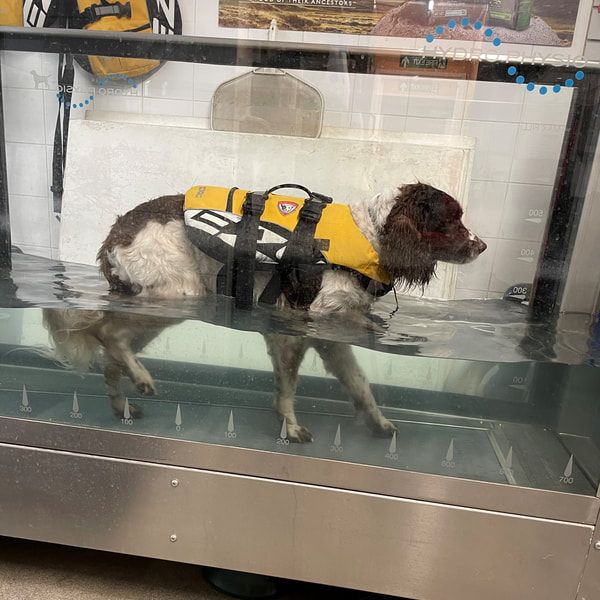|
Hydrotherapy has been around for thousands of years due to the healing properties of water. The benefits of hydrotherapy for dogs cannot be understated. Water is used as a form of therapy that aids healing and improves overall health. Whilst humans have been using this method for a long time, using it for animals is comparatively new. Starting with racehorses, they were walked through water to help heal and improve their strength. This then moved onto racing greyhounds and now is regularly used on many forms of smaller animals, including cats and dogs. Here we discuss in more detail what hydrotherapy is as well as the benefits of hydrotherapy for dogs. What is hydrotherapy?The properties of water allow the dog to exercise without having to bear its full weight on the injured area. Doing these exercises can not only improve the circulation of blood to the muscles, but it can also improve overall flexibility and reduce pain and swelling significantly. Hydrotherapy for dogs usually involves walking in water or swimming. A specific treatment plan is structured for each patient, depending on the injury and condition of the dog. Types of Hydrotherapy for dogsUnderwater TreadmillIn many cases, the dog will start off on the underwater treadmill as this more control over the dog’s movements. Therefore, the treatment can be much more targeted. The water level is dependent on the dog and their condition which is why this method of hydrotherapy can be extremely effective, as it can be tailored. The amount of support provided through the water level and treadmill speed to the dog will depend on their condition as well as their progress. WhirlpoolWhirlpool therapy is often used on dogs post-surgery as it can reduce pain substantially. Once the dog has entered the water, a warm jet stream comes on which is essentially massaging the dog and helping ease the pain of their injury. PoolHydrotherapy in the pool is less controlled but is still an effective way to improve mobility and strength. Especially for elbows, chest muscles, and limbs. If the dog is not comfortable in the water, some dogs may prefer the pool as it is more freeing and potentially more fun. However, the treadmill or whirlpool may be more beneficial to them. A pet hydrotherapy specialist will be able to determine whether a treadmill, whirlpool, pool, or a combination will work best for your dog. What conditions can hydrotherapy help?This form of treatment has been proven to help a range of conditions including, but not limited to:
What are the benefits of Hydrotherapy?
Hydrotherapy provides a safe, low-impact form of exercise that can benefit your dog greatly. Not only can it help reduce pain from injuries, but it is also great for improving core strength, weight loss, and building strength.
Whether your dog has orthopaedic, neurological, soft tissue injuries, or some other degenerative medical condition, hydrotherapy could be an important and effective part of their overall health and fitness plan. To find out whether this form of treatment is suitable for your dog and their condition, get in touch with a qualified pet physiotherapist who will be able to advice you on the next steps.
0 Comments
|
AuthorNAVP Archives
June 2024
Categories
All
|
The Association |
Services |
|


 RSS Feed
RSS Feed